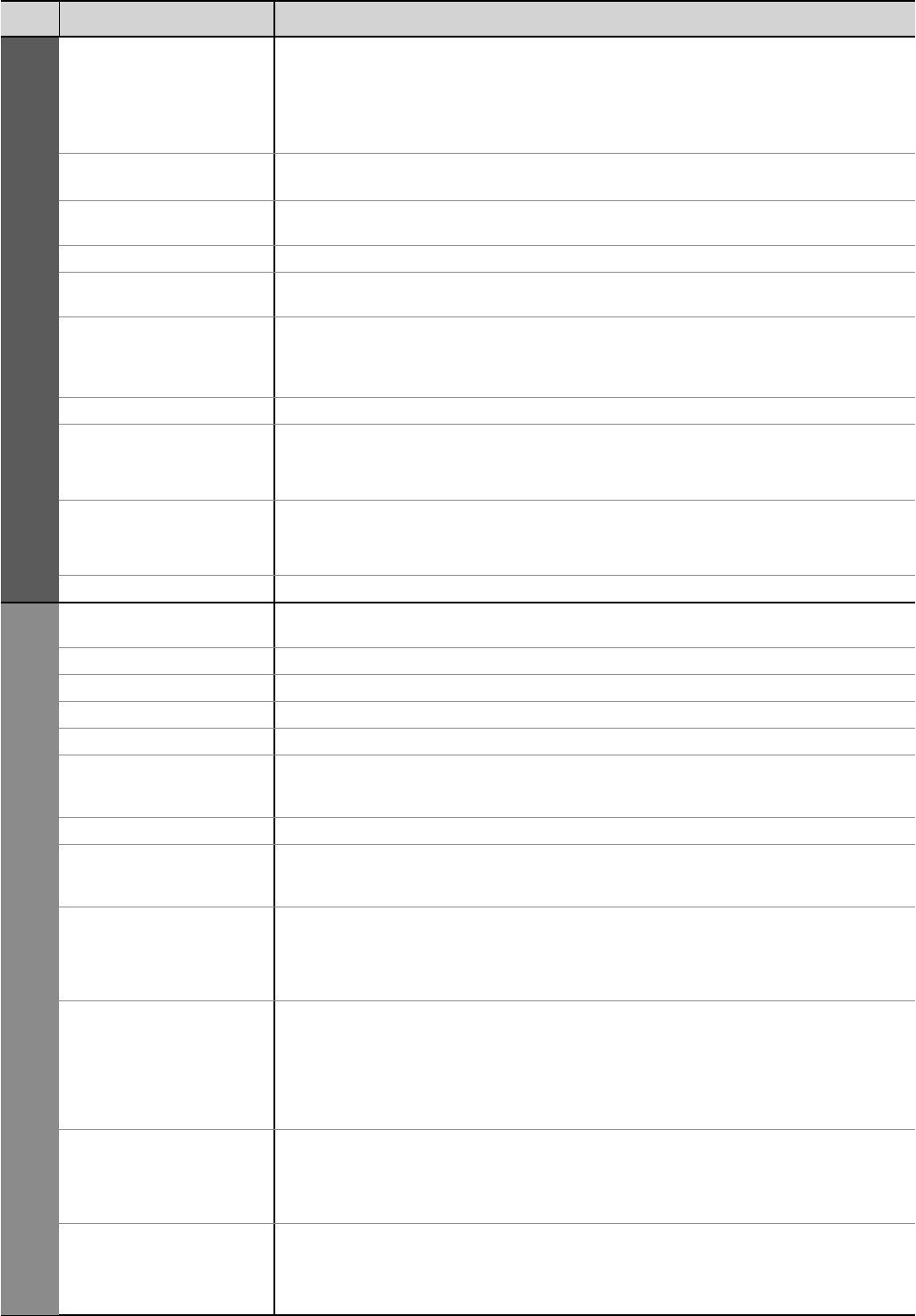
24
How to Use Menu Functions
Menu list
Menu Item Adjustments / Configurations (alternatives)
Picture
Viewing Mode
Basic picture mode (Dynamic / Normal / Cinema / Game)
Dynamic :
Provides enhanced picture contrast and sharpness when viewing in a bright room
Normal : Recommended for viewing under normal ambient room lighting conditions
Cinema : For watching movies in a darkened room producing a cinema-like picture
Game
: Game playing time is displayed only when connecting a game equipment.
Set for each input signal
●
Contrast, Brightness,
Colour, Sharpness
Increases or decreases the levels of these options according to your personal
preference
Tint
With an NTSC signal source connected to the TV, the picture hue can be adjusted to suit your taste
For NTSC or Component / HDMI input signal reception only●
Colour Balance
Allows you to set the overall colour tone of the picture (Cool / Normal / Warm)
Colour Management
Automatically adjusts colours to vivid ones (Off / On)
Not valid on PC signal●
x.v.Colour
Increases the colour gradations (Off / Auto)
This is effective when watching HD moving pictures with extended gamut (xvYCC) from
external equipment.
HDMI input mode only
●
Eco Mode
Adjusts picture settings automatically dependent on ambient lighting conditions
(Off / On)
P-NR
Picture Noise Reduction
Automatically reduces unwanted picture noise and flicker noise in the contoured parts of
a picture (Off / Min / Mid / Max)
Not valid on PC signal
●
3D-COMB
Occasionally, whilst viewing still or slow moving pictures, colour patterning may be seen
Set to “On” to display sharper and more accurate colours (Off / On)
For PAL or NTSC signal reception only
Not valid on S-Video, Component, PC, HDMI and SD Card
●
●
Reset Picture Defaults
Press the OK button to reset the present Picture Menu to the default settings
Sound
Mode
Basic sound mode (Music / Speech)
Set for each input signal
●
Bass
Increases or decreases level to enhance or minimise lower, deeper sound output
Treble
Increases or decreases level to enhance or minimise sharper, higher sound output
Balance
Adjusts volume level of right and left speakers
Headphone Volume
Adjusts the volume of the headphones
Surround
Surround sound settings (Off / V-Audio)
V-Audio: Provides a dynamic enhancer to simulate improved spatial effects
Switching is also possible by the Surround button on the remote control (p. 10).
●
Volume Correction
Adjusts volume of individual channel or input mode
Speaker Distance
to Wall
Adjusts the low frequency sound (Over 30cm / Up to 30cm)
Over 30cm: Recommended when the back space between the TV and wall is over 30 cm.
Up to 30cm: Recommended when the back space between the TV and wall is within 30 cm.
●
●
MPX
Selects stereo / monaural (Mono / Stereo) (p. 46)
Normally: Stereo
Stereo signal cannot be received: Mono
M1 / M2: Available while mono signal is transmitted
Analogue TV mode only
●
●
●
●
Digital Audio
Preference
Selects the initial setting for Audio tracks (Dolby D / MPEG)
If programme has both Dolby Digital and MPEG audio tracks, priority is given to what you select
Dolby D: A method of coding digital signals developed by Dolby Laboratories. Apart from
stereo (2ch) audio, these signals can also be multi-channel audio.
MPEG: An audio compression method that compresses audio to small size without any
considerable loss of audio quality.
Digital TV mode only
●
SPDIF Selection
Selects the initial setting for digital audio output signal from DIGITAL AUDIO OUT
terminal (Auto / PCM)
Auto: Dolby Digital is output as Dolby Digital Bitstream. MPEG is output as PCM.
PCM: Dolby Digital is output as PCM. MPEG is output as PCM.
Digital TV mode only
●
MPEG Optical Level
You can adjust the audio level of MPEG output from DIGITAL AUDIO OUT terminal as
the initial setting
0dB to -12dB in -2dB reductions
Digital TV mode only
●
●


















